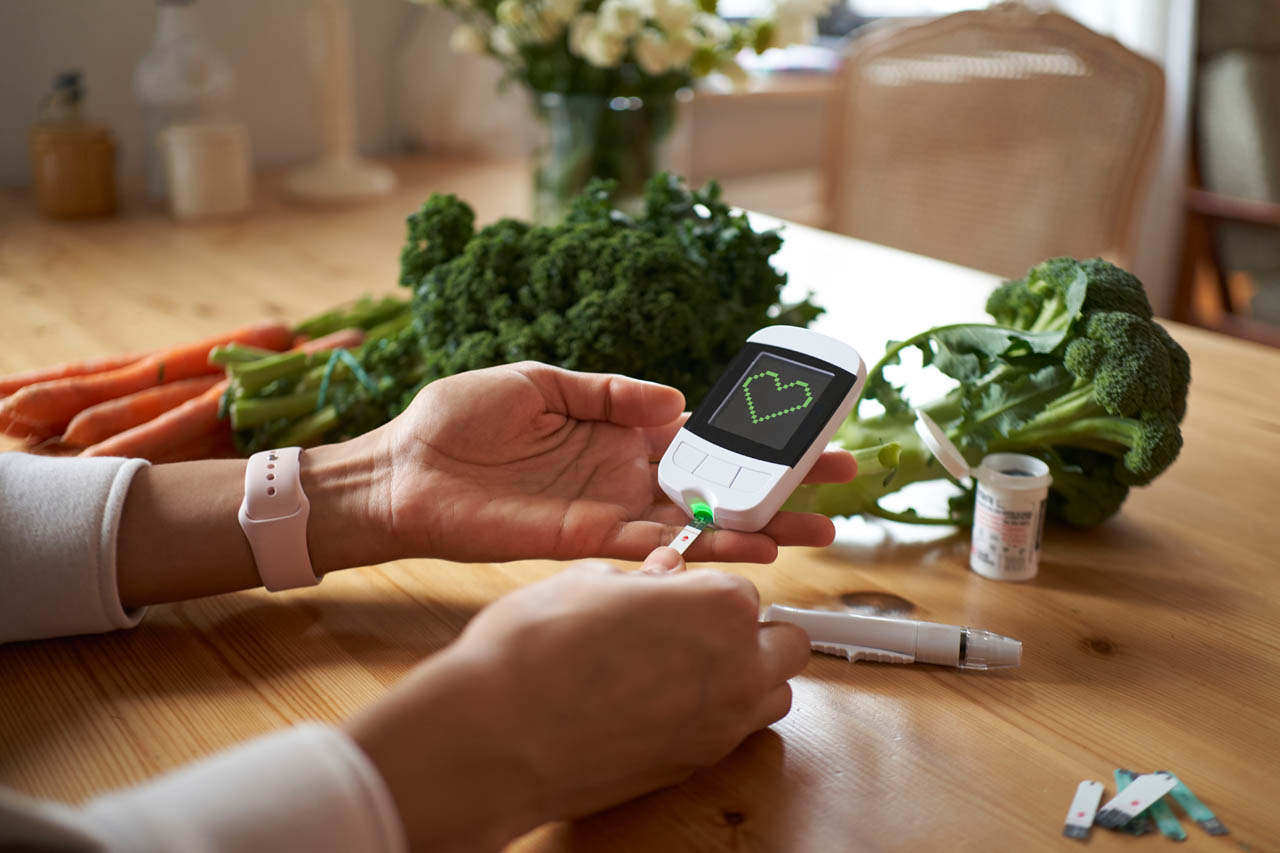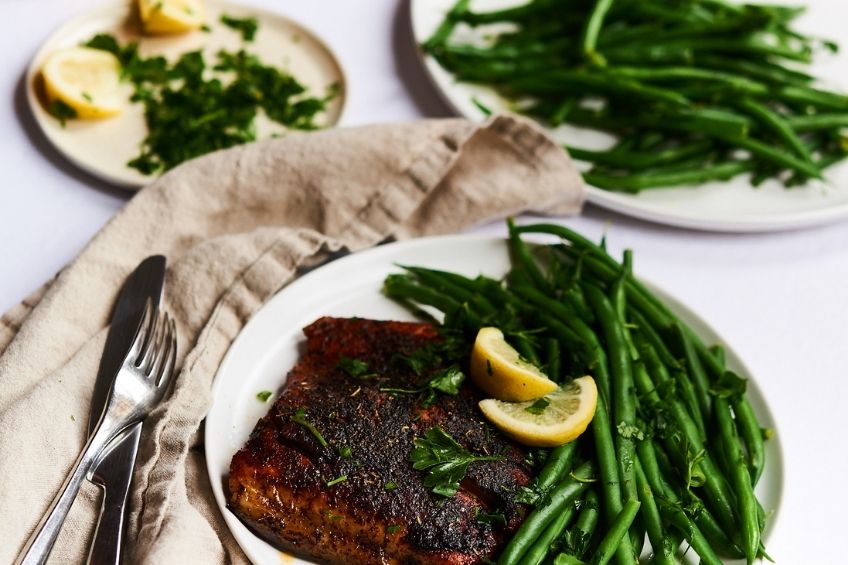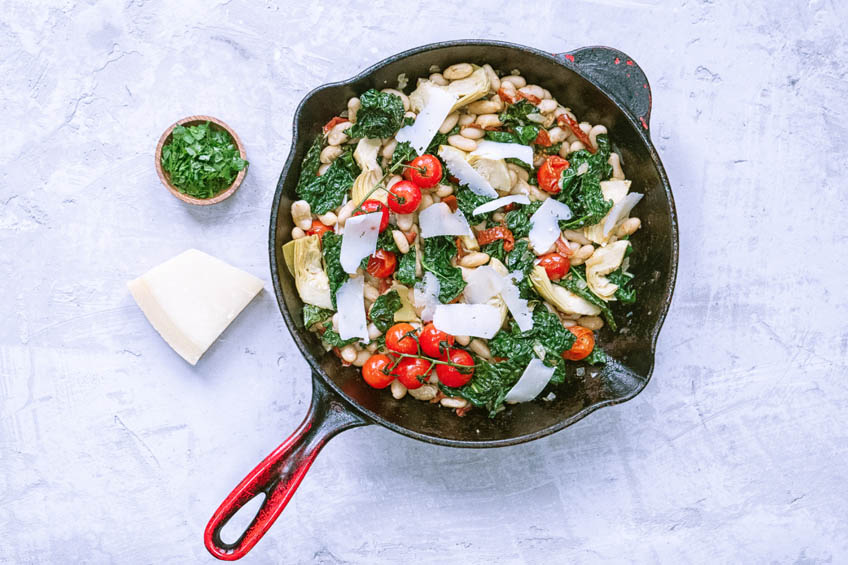
My entire family is sitting at the dinner table and just before we’re about to eat, my brother-in-law takes out his insulin syringe, discreetly administers it into his stomach, checks some apps on his phone and then we all start eating. My brother-in-law has Type 1 diabetes and for years, I’ve watched him meticulously count carbs to predict what his blood sugar will do and how much insulin he needs to take, since his own body doesn’t make it. He does this to survive, to function in everyday life and to ensure he doesn’t fall into a diabetic coma. Knowing all this, I figured tracking my own blood sugar was pointless, I have a functioning pancreas that makes and releases insulin, so I don’t need to really care or think much about this.
I was wrong. Tracking and understanding my own blood sugar has had one of the most profound impacts on my overall health and daily life, from my mood to my focus to my menstrual cycle to my weight to my sleep.
Related: I Went Keto for 3 Months and Got Gout. Here’s What I Wish I’d Known
How blood sugar works
Whenever you eat anything that has a carbohydrate in it (from bread to sweet potatoes to blueberries to pasta to bell peppers to cake), your blood sugar starts to rise. Your body then releases insulin and insulin escorts blood sugar (AKA glucose) into your cells. Your body needs glucose and uses it for energy. Not just energy to feel energized and alert, but everything from thinking-to-blinking needs glucose.
When blood sugar is constantly spiking and crashing down this hurts your body and can lead to insulin resistance (when insulin stops functioning properly). Unstable blood sugar and insulin resistance have a hand in all the big diseases like PCOS, Type 2 diabetes, heart disease, cancer, dementia and Alzheimers. So getting a handle on blood sugar is super, super important for health and longevity.

This Korean Sweet and Sour Seaweed Salad is a great blood sugar balancing snack. Get the recipe.
Why I started tracking my blood sugar
A few years ago I came across this study out of the Weizmann Institute and my mind was forever blown! The researchers took 800 healthy people, put continuous glucose monitors on their arms (a device that tracks glucose) and fed participants identical meals. Here’s what happened: even though people ate the same foods, they had completely different glucose responses. For example, one person ate ice cream and their glucose spiked really, really high; then, the next person ate the same ice cream and their glucose stayed stable.
I was fascinated. I desperately wanted to understand how my meals were affecting my blood sugar and how this was impacting my body. So, I slapped a continuous glucose monitor on my arm, used a glucometer to make sure it was accurate and started experimenting.
Related: Sugar Detox: A Nutritionist Explains How to Reset Your System
Here’s what happened
The foods that I was eating that I thought were so healthy were devastating to my blood sugar. I would wake up and have a coffee with loads of oat milk… big spike. Then, I would eat whole grain toast slathered with almond butter, bananas and a drizzle of honey. Or, a big bowl of oatmeal with blueberries and maple syrup. Or, a smoothie that was mainly bananas and dates… enormous spikes.
By lunchtime, I was starving, shaky and severely lacking any kind of focus. So, I ate a grain bowl with lots of rice, chickpeas, sweet potatoes, kale, a tiny bit of chicken and a honey mustard dressing… big spike.
Around 3pm I was lying on the floor beside my computer, feeling tired, foggy, irritable with a slight pressure over my eyes and forehead. I was unable to focus and desperate for something carby. So I went to my kitchen and shoved handfuls and handfuls of my kid’s fishy crackers in my mouth… ginormous spike. I felt good for about 5 minutes before I started feeling really, really bad.
At dinner, I had a shrimp stir-fry with loads of veggies and for the first time that day, my blood sugar was stable.
Before bed, I ate some popcorn with a few chocolate chips; not only did this lead to a big spike but it stayed high for quite a while and at 3am I woke up unable to fall back asleep.

Try this 10 minute blackened trout with green beans recipe for a satisfying and blood sugar balancing dinner. Get the recipe.
Here’s what I learned
Just because something has healthy ingredients in it, doesn’t mean it’s good for your blood sugar. It was like a game of connecting the dots; it suddenly made sense why I was having periods of exhaustion and hanger and shakiness and irritability throughout the day and it all connected back to what I had eaten one or two hours prior.
When I continued experimenting by adding way, way more protein to my meals (like eggs, chicken, tofu, beef, salmon and hemp seeds), and a bit more fat (like olive oil, avocado, almonds, feta and tahini) my blood sugar spikes started to stabilize.
I then added in more stabilizing “hacks” like walking after meals. I experimented with eating blood sugar balancing meals first and then eating something sweet, like having a protein-rich smoothie and then eating challah French toast. I couldn’t believe my blood sugar stayed stable, with no major spikes or crashes.
This honestly felt like magic to me. Here’s the best part: I continued to do this for months and after a while I noticed some other significant shifts.
My energy and mood were so balanced and not erratic from glucose spikes and crashes, I was a better parent, I was way calmer with my kids and barely yelled. My PMDD (it’s like PMS but the symptoms are depression, anxiety and irritability) had pretty much gone away or was very minimal. My body composition changed and I felt lighter in my body. I quit eating sugary snacks at night and my sleep was deep, restful and uninterrupted. I wasn’t experiencing lunchtime or 3pm crashes and could actually focus on work and get things done efficiently.

This 20 minute Tuscan White Bean Skillet is a hearty blood sugar balancing meal. Get the recipe.
What does this mean for you
Most people are riding the “glucose rollercoaster” all day, not realizing that their mood, energy, focus, anxiety, productivity, hunger, and sleep are all related to their glucose levels.
Now, you don’t need a continuous glucose monitor to learn about your own blood sugar. You can use the self “check-in” method, where you ask yourself these questions one and two hours after eating. Am I tired? Hungry? Angry? Irritable? Annoyed? Sleepy? Anxious? Shaky? Unfocused? Lethargic? If you notice these feelings coming up, ensure your meals have a good, hearty balance of protein, fat and fiber to keep them (and you) stable. It only takes a few tweaks to balance blood sugar but I promise, you’ll start feeling the benefits immediately.
As with all diets, be sure to check with your doctor to make sure this is beneficial for you.
